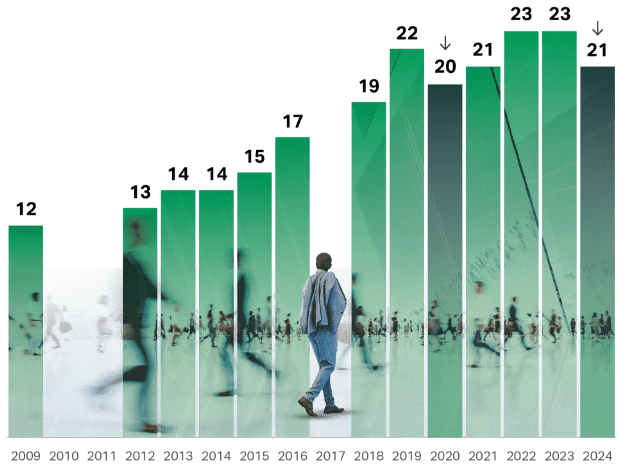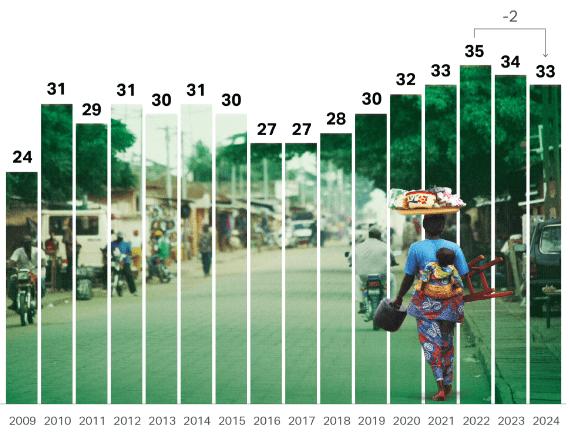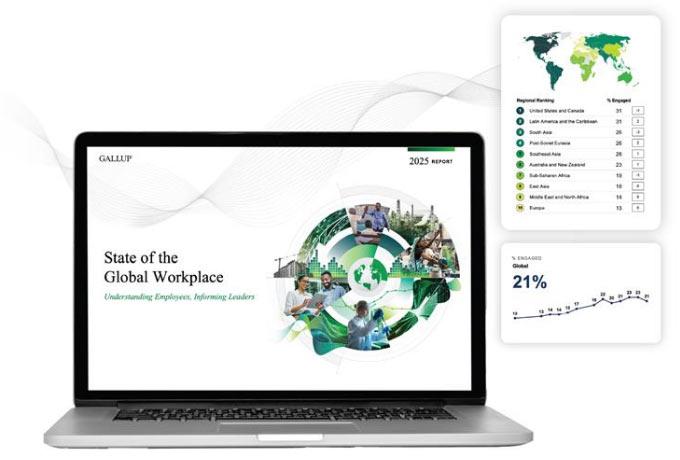Workplace
AI Use at Work Has Nearly Doubled in Two Years
Understanding Employees, Informing Leaders
Global employee engagement declined to 21% in 2024, with managers experiencing the largest drop. This marks only the second decline in engagement in the past 12 years — a worrying sign for organizations already struggling with productivity.
Global employee life evaluations declined for a second consecutive year, with managers experiencing the largest drop as well.
The global workplace is at a turning point. Download the report to see the full data on employees and what actions leaders can take to invigorate workplaces.
Andile V. | Field Operating Manager
Pablo | Foreign Trade Manager
Yookyung L. | Social Researcher
What we know about the world's employees.
Global employee engagement fell two points to 21% last year, with lost productivity costing the global economy $438 billion.
Engaged employees produce better business outcomes than disengaged employees — and engaged teams have a measurable impact on organizational performance.

Manager engagement fell from 30% to 27% in 2024. Young managers and female managers experienced the largest declines.
If managers are disengaged, their teams are too. Seventy percent of team engagement is attributable to the manager. It's time to rethink the role of manager.
Anneliese A. | Revenue Operations Senior Manager
Melissa T. | Restaurant Manager
Abu M. | Marketing Manager
Employee wellbeing has been declining since its peak at 35% in 2022. Older managers and female managers experienced the biggest decreases in the past year.

That would represent a 9% increase in global GDP.
But if leaders seize the moment, a productivity opportunity awaits. In fact, some organizations are already enjoying the benefits of a highly engaged workforce.
Manager engagement is the key to reversing declining productivity, improving employee wellbeing and unlocking trillions in economic potential.


Thank you for your interest in the State of the Global Workplace: 2025 Report.
Watch as Gallup experts unpack the latest findings from the State of the Global Workplace report and discuss what they mean for employees, managers and leaders.

Gallup is releasing new data and analyses related to work, education, public opinion and more. Subscribe to make sure you never miss another finding.
Explore our best data, insights and advice around the key findings from the State of the Global Workplace report.

Meta-Analysis
Read insights from the world's largest study on employee engagement and performance data.

Workplace Indicators
Track the progress on the topics that matter most in workplaces and to societies at large.

Effective Leadership
Discover more about what makes an effective leader and how to develop leadership skills.

Employee Wellbeing
Learn how employee wellbeing influences performance and organizational outcomes.